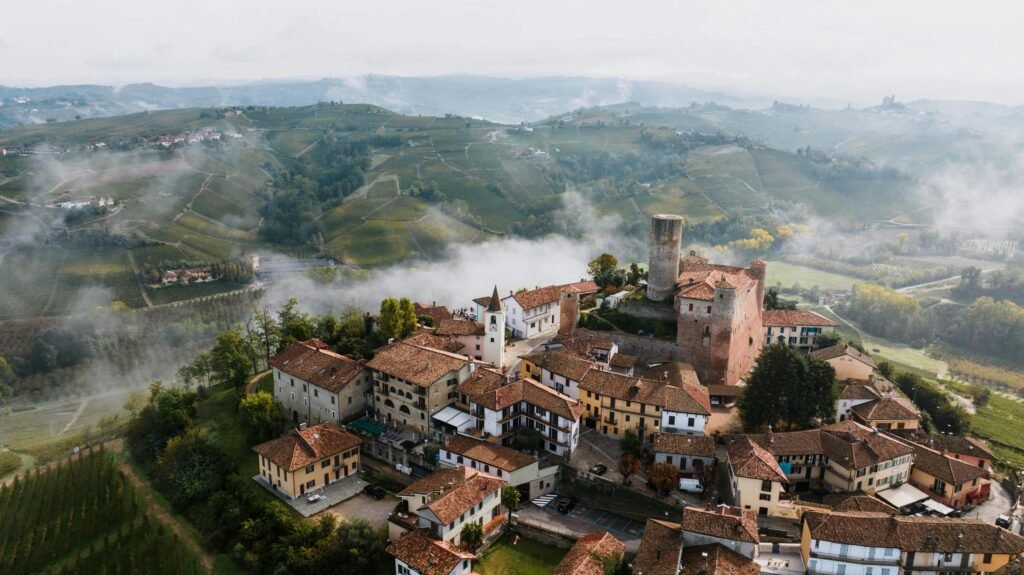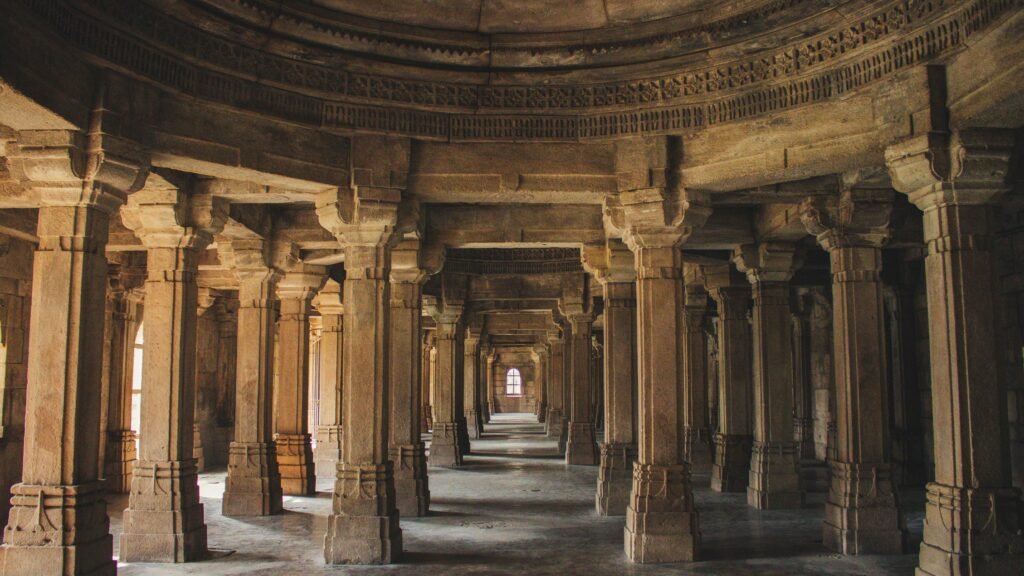Festambiente 2025 returns for its impressive 37th edition from August 6-10, transforming the ecological town of Rispescia in Tuscany’s Maremma Regional Park into Europe’s most significant environmental festival, attracting over 80,000 visitors annually.
This isn’t just another music festival folks – it’s a five-day immersion into what our future could look like if we actually got serious about sustainability.
I remember my first time walking through those gates back in 2013. The smell of organic food wafting through the air, kids laughing in educational workshops, and the most genuine conversations I’d ever had about environmental issues happening right next to the main stage.
t was like stepping into an alternate reality where caring about the planet was actually cool!
What Makes Festambiente Italy’s Most Important Eco-Festival
Let me be honest with you – I’ve been to a lot of festivals over the years, and most of them talk a good game about being “green.” But Festambiente? They’ve been walking the walk since 1989.
The festival unfolds in the eco-town of Rispescia, founded by Legambiente in the heart of Maremma Regional Park, serving as a vibrant lab for future-focused environmental debate, cinema under the stars, music concerts, organic food tastings, exhibitions, and dedicated spaces for children and families.
What really gets me excited about this place is how they’ve managed to create something that feels both educational and incredibly fun.
You’re not being lectured to – you’re being invited to participate in something bigger than yourself.
The festival spans three hectares divided into thematic neighborhoods.
Each area focuses on different aspects of sustainable living – from renewable energy demonstrations to circular economy workshops.
It’s like a mini city where every corner teaches you something new about living in harmony with our planet.
The 2025 Festival Experience: Five Days of Sustainable Magic
This year’s festival promises free evening concerts featuring major artists including Eugenio in Via Di Gioia, Mauro Pagani, Giancane, Africa Unite & The Bluebeaters, and Bandabardò.
The beauty of Festambiente lies in how seamlessly they blend entertainment with education.
During the day, you might find yourself in a heated debate about renewable energy policy, and by evening, you’re dancing to some of Italy’s best musicians under a canopy of stars.
I’ve got to admit, I was initially skeptical about how “fun” an eco-festival could really be.
The energy here is infectious.
People aren’t just attending – they’re participating, learning, and genuinely connecting with each other over shared values.
One thing that consistently impresses me is their approach to food.
The festival features healthy, organic, and quality food as one of its absolute protagonists, with dedicated pavilions showcasing sustainable cuisine.
Family-Friendly Activities That Actually Matter
The festival features “La città delle bambine e dei bambini” (The City of Girls and Boys), a dedicated universe for children that combines nature, science, sports, creativity, and sustainability in one comprehensive growth and entertainment experience.
As someone who’s watched kids at this festival over the years, I can tell you that this isn’t just babysitting with an environmental theme.
These children’s programs are seriously impressive.
Kids are building solar-powered cars, learning about composting through hands-on activities, and participating in nature walks that make them genuinely excited about protecting our environment.
The festival organizers really understand that environmental education needs to start young, but it also needs to be engaging.
They’ve mastered the art of making learning feel like play, which honestly, more educational institutions could learn from.
Environmental Debates and Learning Opportunities
The festival dedicates significant space to core themes of contemporary environmentalism: from ecological transition to protected areas, from circular economy to agroecology, and ethical finance.
Now, I know what you’re thinking – “debates” at a festival sounds about as exciting as watching paint dry.
But these aren’t stuffy academic discussions.
They’re passionate, sometimes heated, always enlightening conversations between people who genuinely care about our planet’s future.
I attended a session on circular economy last year that completely changed how I think about waste.
The speaker wasn’t some ivory tower academic – she was a businesswoman who’d successfully implemented circular principles in her company and was sharing real, practical insights.
The festival also features the return of the School of Eco-Events in its second edition, serving as a national reference point for organizing low environmental impact events.
his is particularly exciting for anyone involved in event planning or management.
You’re literally learning from the best in the business about how to create events that don’t harm our environment.
The dialogue format they use encourages participation from attendees.
Sustainable Practices That Set the Standard
What really sets Festambiente apart is their commitment to practicing what they preach. This isn’t greenwashing – it’s the real deal.
The festival operates on renewable energy, uses compostable materials wherever possible, and has implemented a comprehensive waste separation system that actually works.
They’ve also partnered with local producers for most of their food offerings, reducing transportation emissions while supporting the regional economy.
It’s a perfect example of how environmental responsibility and economic sense can work hand in hand.
I made the mistake once of bringing my own camping chair made from non-sustainable materials.
While nobody gave me grief about it, seeing all the thoughtfully designed, eco-friendly infrastructure around me made me feel pretty silly.
The next year, I invested in sustainable camping gear, and honestly, it’s held up better than my old stuff anyway.
The Maremma Setting: Nature as Co-Host
The Maremma region serves as a great protagonist of many events.
Confirming itself as an incubator of good environmental and social practices, serving as a reference point for a development model capable of combining nature protection, innovation, and local community participation.
The location itself is part of the magic. Rispescia borders the Maremma Regional Park, placing you in the midst of some of Italy’s most spectacular and biologically rich environments.
The park offers hiking trails, wildlife watching opportunities, and some of the most stunning sunsets I’ve ever witnessed.
It provides the perfect context for a festival dedicated to environmental awareness – you’re experiencing the beauty of what we’re trying to protect firsthand.
The integration between the festival and its natural setting is seamless.
Workshops often take place outdoors, concerts use the natural acoustics of the landscape, and you’re constantly reminded that you’re a guest in this incredible ecosystem.
The proximity to the Tyrrhenian Sea also means you can combine your festival experience with beach time, though I’d recommend sticking around for the evening programs – that’s when the real magic happens.
Planning Your Visit: Practical Tips from Experience
After several years of attending Festambiente, I’ve learned a few things that can make your experience even better.
First, accommodation fills up fast.
The festival offers camping options on-site, which I highly recommend if you’re up for it.
There’s something special about waking up in the morning and already being surrounded by the festival atmosphere. Plus, it’s the most sustainable option.
If camping isn’t your thing, book accommodation in Grosseto or the surrounding area as early as possible.
The festival provides shuttle services, but having your own transportation gives you more flexibility to explore the beautiful Maremma region.
Pack for variable weather – August in Tuscany can be hot during the day but surprisingly cool at night, especially near the coast.
I learned this the hard way during my second visit when I was shivering through an evening concert because I’d only packed summer clothes.
Don’t forget to bring cash – while many vendors accept cards, some of the smaller local producers still prefer cash transactions.
It’s also a good idea to bring a portable phone charger, though the festival has charging stations available.
Getting Involved: Beyond Just Attending
What I love most about Festambiente is how it encourages you to become part of the solution rather than just a passive observer.
The festival offers volunteer opportunities that let you get involved in the organization while learning about sustainable event management firsthand.
I volunteered for waste management one year (I know, sounds glamorous, right?) and learned more about circular economy principles in those five days than I had in months of reading about it.
They also provide networking opportunities for people working in environmental fields or looking to transition their careers toward sustainability.
Some of the most valuable professional connections I’ve made happened during casual conversations between performances.
The festival actively encourages attendees to share their own sustainable practices and innovations.
There are designated spaces for impromptu presentations and discussions, creating a genuinely collaborative learning environment.
Many attendees organize carpools and train groups to reduce transportation emissions while building community before the festival even begins.
Check their social media channels for coordination opportunities.
The Cultural Impact: Music with Meaning
Evening concerts feature established artists including Eugenio in Via Di Gioia, Mauro Pagani, Giancane, Africa Unite & The Bluebeaters, and Bandabardò, all performing for free.
But the musical programming goes beyond just entertainment – it’s carefully curated to align with the festival’s environmental message.
Many of the performing artists are actively involved in environmental causes, using their platforms to promote sustainability.
This creates concert experiences that feel more meaningful than your typical festival performance.
The Colorofilla Film Festival runs concurrently, showcasing environmental documentaries and films that explore our relationship with nature.
The festival features cinema screenings, reading at sunset in the olive grove, sports activities for children and youth, and exhibition areas dedicated to renewable energy, agroecology, protected areas, and circular economy.
The integration of different art forms – music, film, visual arts, and literature – creates a rich cultural experience that engages different learning styles and interests.
You’re not just hearing about environmental issues; you’re experiencing them through multiple artistic
Community Building and Networking
Beyond the official programming, Festambiente creates incredible opportunities for like-minded people to connect and build lasting relationships.
I’ve met people from all over Italy and Europe who share my passion for environmental protection.
Some of these connections have led to collaborative projects, others to lifelong friendships.
There’s something about the festival environment that makes people more open to genuine conversation and connection.
The shared camping areas become impromptu communities where people share resources, knowledge, and experiences.
The festival organizers facilitate these connections through structured networking sessions, but the most valuable relationships often form organically during meals, between performances, or while exploring the surrounding area.
For professionals working in environmental fields, this networking aspect can be incredibly valuable.
The festival attracts people from NGOs, government agencies, private companies, and academic institutions, all united by shared environmental values.



